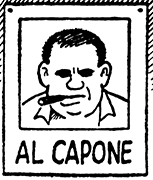|
I have a baofeng handheld and I live near a couple of high power pager transmitters just outside the 2m band (138MHz and 152MHz). Is it possible for me to make a filter and what kind of equipment would I need for that?
|
|
|
|

|
| # ? May 13, 2024 11:43 |
|
Crankit posted:I have a baofeng handheld and I live near a couple of high power pager transmitters just outside the 2m band (138MHz and 152MHz). Is it possible for me to make a filter and what kind of equipment would I need for that? What you want here is a quarter-wave shorted stub at your desired operating frequency. Take a coax tee. On one side of the tee, your antenna feedline. On the other side of the tee, a patch to your radio. On the down leg of the tee, you place a length of coax that you have cut to be 1/4 wavelength (factoring in velocity factor, so it'll be shorter than a free-air 1/4 wave), and on the dangling end of that stub you want to cleanly SHORT the center and shield together, then insulate. How it works: At the resonant frequency, the coax stub is an impedance transformer. The dangling end's impedance (near 0 ohms) is transformed with a wacky little equation and basically it turns out to be near-infinite impedance at the tee - which won't load or affect your system at that frequency. However, as you go off the frequency, higher or lower, it's not a quarter wave, and the impedance will at the tee be non-infinite and will shunt the signal down. The flip side of this would be to use a quarter-wave OPEN stub, which has the opposite effect. At most frequencies, the stub just hangs out, having minimal effect. But at the tuned frequency, the open far end is transformed to near-zero impedance at the tee, which shunts it to ground. However since you really need a passband due to your offenders being above and below your desired band, a shorted stub would be a simpler move. Note also that you can build a quarter wave stub out of any sort of material that you can turn into a quarter wave feedline. Often dudes have used concentric copper pipes set up in a coaxial setup, with a movable shorting disc at the far end. This is where you start to get into lower loss, higher rejection and better efficiency. The coax stub is a cheap try, though, to see if it would help at all... Jonny 290 fucked around with this message at 20:20 on Nov 6, 2013 |
|
|
|
Since I work in the communications industry (LMR racing communications), I picked up my Technician license a few weeks ago. KK6HHO! Also sup Jonny
|
|
|
|
DJ Commie posted:Since I work in the communications industry (LMR racing communications), I picked up my Technician license a few weeks ago. KK6HHO! Congrats! In other news, one of the legs of my G5RV Jr snapped after a snowstorm. Not entirely sure what caused it, since it wasn't all that windy, so maybe it was the cold and ice. Off the air on HF for now until I pull the antenna down and fix it. 
|
|
|
|
passed my technician test today. only got 20/35 on my general though, not too bad considering I didn't even look at the general license material.
|
|
|
|
Out of curiosity, has anyone been able to pick up transmissions from the Philippines or any of the other regions hit by the recent typhoon? I haven't been able to find too much online regarding communications in impacted areas.
|
|
|
|
A frequency table saw listed the higher areas of each HF band as emcomm, if that's any help. No idea if the geography there lends itself to HF over just putting up LoS links. I know TSF is there but they're probably all using radio-lines and satcom. E: also, there's this: http://www.arrl.org/news/view/hams-in-philippines-support-critical-communication-in-typhoon-s-wake longview fucked around with this message at 15:16 on Nov 10, 2013 |
|
|
|
longview posted:A frequency table saw listed the higher areas of each HF band as emcomm, if that's any help. Sadly, I don't have an HF rig yet (I'm still studying for the license tests and just listening to a cheap HT) and some recent update to my OS (which I haven't pinned down yet) has rendered most online SDR players inoperable. I'd spotted that page, and a small number of others, but I was mostly curious if anyone outside of the area was able to catch attempts to disseminate 3rd party traffic or anything else that's appropriate to share.
|
|
|
|
As you see from that link, most of local emergency work is done through 40 meter NVIS, and 2-meter VHF frequencies. Since there's not a lack of links out of the country, there doesn't tend to be traffic on the long-range frequencies. There are some emergencies where countries or regions get cut off, and depending on radio conditions links between the east and west part of a country might even need to go through relays in foreign countries. Vir fucked around with this message at 20:20 on Nov 10, 2013 |
|
|
|
Vir posted:As you see from that link, most of local emergency work is done through 40 meter NVIS, and 2-meter VHF frequencies. Since there's not a lack of links out of the country, there doesn't tend to be traffic on the long-range frequencies. Ah. I didn't even think about NVIS for the 40m transmissions (I assumed that was what they were using for international communications). Thanks!
|
|
|
|
Yeah, 75/40/30 (to a lesser extent) NVIS is really awesome. Burn the sky! In radio news, I am moving my family this year. One of the sacrifices I am making is that I can't really have a station for a while - moving will be chaos - and we'll be renting for a few years. So, what do you do in this situation? Well, it helps if you have a full-size SUV. Go mobile! I started fabrication last night, but by the end of the week I should have my Hy-Gain AV-18VS mounted to the side of my Blazer. The plan is to rip off the janky loading coil and tune it straight off of the single wire terminal of my tuner. I may end up building a little LC matching box, it's super easy at this length to cover all of 20-10 with just a varicap and an inductor with a single tap. This isn't going to be a 'bomb down the highway while yapping on 14.275' setup as much as it is going to be a fixed portable/mountaintopping setup for events and satellite-hunting camping weekends. On the other rear corner, i'm going to put an identical mount and a 5-14 foot (collapsed-extended) fiberglass mast with some sort of VHF/UHF on top.
|
|
|
|
So what are everyone's thoughts on Magnetic Loop antennas for 40/20m where a dipole can't be lifted to 1/4 wavelength off the ground? My options are either Inverted V 40m Dipole or looking at MLA from MJF
|
|
|
|
poeticoddity posted:Out of curiosity, has anyone been able to pick up transmissions from the Philippines or any of the other regions hit by the recent typhoon? I haven't been able to find too much online regarding communications in impacted areas. Just got this: ARES Email posted:ARRL has successfully sent faxes and email to Philippine Amateur Radio Association members in Manilla. 7.095 MHz remains PARA's primary operating frequency into and out of the affected area; please keep that frequency clear and ask your friends worldwide to do the same. I'm gonna leave my radio on and see if I can hear anything.
|
|
|
|
Jonny 290 posted:What you want here is a quarter-wave shorted stub at your desired operating frequency. I forgot to ask, since my HT is a dual bander would I need to remove that for 70cms use, and will it radiate and/or should it be coiled?
|
|
|
|
Video on BBC News Magazine today from a local club near me in Chorley, North West UK http://www.bbc.co.uk/news/magazine-24917880
|
|
|
|
Crankit posted:I forgot to ask, since my HT is a dual bander would I need to remove that for 70cms use, and will it radiate and/or should it be coiled? Well, at 2 meters it's only going to be like 14-16 inches long or so - velocity factor means the necessary cable length is less than a quarter wave in free air. It will not radiate or spit out any appreciable RF. I'd still cover and insulate the end though. Interestingly enough, at triple the frequency the stub acts like a 3/4 wave stub, which is a 1/4 wave stub hanging off of a 1/2 wave transmission line - and half waves basically do nothing. So it'd still work, sorta, around 70cm. I'd disconnect it though, losses might be high.
|
|
|
|
So a big reason for me taking my amateur exam was to screw around with long distance wireless networking, ala hsmm-mesh.org. Are there similar projects for HF bands (understandably at low bandwidth) that provide wireless data comms at very long distances?
|
|
|
|
Beccara posted:So what are everyone's thoughts on Magnetic Loop antennas for 40/20m where a dipole can't be lifted to 1/4 wavelength off the ground? My options are either Inverted V 40m Dipole or looking at MLA from MJF My question, too. I have a dipole in the attic, but due to the orientation of the house, the null's point east and west, so all my energy gets beamed into the pacific, the sky and the empty Canadian wastes. I've been looking at possibly building a MLA. What I've found is that other than cost (almost all of the cost is in the variable capacitor and remote control thereof), the major issue with MLA's is the narrow bandwidth. You may see bandwidth as narrow as a 4-5 kHz. This just means that tuning around a band is a two step process (tune receiver, tune antenna). I've seen some argument that unless you have ideal mounting of beams and dipoles, the MLA will probably be just as good since the MLA is so much less sensitive to height above ground (though it is very sensitive to large bits of metal in its near field).
|
|
|
|
Small loops are great, but yes, you need to build them carefully and throw some scratch at a good capacitor, and deal with low bandwidth. However, the number of situations where you're willy-nilly spinning the dial for hours on end listening for a station are few and far between. I spend most of my time hunkering in a small subsegment, 10 to 30 KHz across. adorai posted:So a big reason for me taking my amateur exam was to screw around with long distance wireless networking, ala hsmm-mesh.org. Are there similar projects for HF bands (understandably at low bandwidth) that provide wireless data comms at very long distances? I don't know too much about big networks, but you can easily get into PSK31 with just your computer and radio. PSK31 can get you two-way-chat capable communications at _very_ low signal levels. I've chatted all over this hemisphere with five watts on 30 meters and can get Euros and South Africa with 50. There are also super slow speed modes like JT65 that can actually be decoded below the noise floor. if I recall correctly, JT65 was originally designed for EME communications and was 'backported' to HF use when people found out how awesome it was. PSK31 is so tolerant that in a pinch you can just turn your radio up and use your laptop mic to receive, and then to transmit you can hold your mic over the laptop speaker and hit PTT. Not optimal, but in an emergency situation it would absolutely work. In addition to this newfangled stuff, there is good old 300 baud packet going around too; that's more 'network-y' and less point-to-point two way chat. Definitely a possibility as well. Jonny 290 fucked around with this message at 16:42 on Nov 15, 2013 |
|
|
|
To continue Scanner chat, Uniden is announcing a new line of scanners tomorrow (11/16) on youtube. They are obviously upping their game since Whistler bought out GRE and they have some real competition again. http://forums.radioreference.com/community-announcements-news/277976-uniden-america-launch-newest-flagship-scanners.html Here is the rear panel of the newest one which just received FCC type acceptance.  It looks like it could be a souped up 996. Hopefully it will decode stuff like P25 Phase 2 and DMR. Right now you need a computer to decode stuff most stuff like TRBO/ NEXEDGE.
|
|
|
|
TRBO would be clutch. TRBO's low price means that it is a hot contender for a LOT of smaller systems and I'm seeing lots of buzz out of that department (<--Moto employee, yes, the good one)
|
|
|
|
Yeah what sucks for people who live out in smaller towns/rural areas is that they have always gotten by with a cheapo analog-only scanner for monitoring sheriff, VFD etc... but TRBO changed that. A not-insignificant number of smallish public safety agencies went to TRBO and right now they can't be monitored without knowing how to: 1) Put a discriminator tap on your scanner (actually not hard, but can be intimidating if you're a newb or casual listener) 2) Be comfortable with compiling stuff in Linux, or be a savvy Windows user The move to digital voice has even pissed off the Railfans, because lots of rail companies are using NXDN now. So anyway if Uniden plays this right and their new scanners can decode Phase 2 P25, DMR and NXDN well those high-end models will absolutely fly off the shelves. IMO there is also a market for a cheaper scanner that will decode digital voice but not deal with fancy trunking. Basically a replacement for the cheap analog only conventional scanners, but they should also decode DMR/NXDN. That way if some greybeard lives out in the sticks where there is no LMR trunking they can still hear the sheriff department if it happened to recently go to TRBO. Just my 2 cents.
|
|
|
|
adorai posted:So a big reason for me taking my amateur exam was to screw around with long distance wireless networking, ala hsmm-mesh.org. Are there similar projects for HF bands (understandably at low bandwidth) that provide wireless data comms at very long distances? Read up on Winlink and HFLink Automatic Link Establishment. These guys appear to be focused on using Microsoft Windows and proprietary Pactor modems, but there are some "free" modes available too, like WinMOR. PSKmail is another thing you might try out. In the commercial marine band, it's used for general email access, while it's used for experimentation in the amateur band. PSKmail uses PSK31 as the data mode for email access and super slow web surfing. In the marine HF band, Pactor is a more usual mode of email access. Today, broadband satellites have taken over most of the marine data traffic. Finally, there are supposed to be some HF packet networks in Australia, but I haven't heard about any in the US.
|
|
|
|
Dijkstra posted:Here is the rear panel of the newest one which just received FCC type acceptance. The answer may be obvious, but this has sorta been picking at me for a while and I gotta ask. Why in the gently caress is there no USB connector on most of these externally-controllable things? Even if it just connects to an AVR microcontroller which then converts it to serial immediately, but you don't need to get a weird cable? Is it just a thing where greybeards already have the necessary stuff so it's just become sort of a standard, or do most people not do rig control stuff? Hell even spend thirty cents more and attach a CMedia audio interface to the USB connector to make it show up as a sound card for data modes and stuff.
|
|
|
|
SoundMonkey posted:The answer may be obvious, but this has sorta been picking at me for a while and I gotta ask. If by chance I'm off base, please, someone correct me. The DE-9 connector you see on a lot of amateur radio equipment is directly compliant with 12V TTL circuitry (which is desirable with equipment running off of automotive batteries), can handle fairly long transmission distances (which would be desirable if the equipment needs to be near an antenna but away from an operator), and doesn't require any level-shifting hardware to connect to the serial port on a motherboard. While it's less convenient for basically anyone who's running a computer made after 2005, it's actually a fair bit easier and cheaper to construct the circuitry that way, especially for small production prototypes or niche hardware. You see it in a lot of laboratory equipment, as well. Plus, it's trivial to construct a microcontroller ICSP programmer using DE-9 compared to USB, as a connection from DE-9 only requires a few resistors, while the connection to USB requires level shifting and something like a FTDI chip.
|
|
|
|
SoundMonkey posted:The answer may be obvious, but this has sorta been picking at me for a while and I gotta ask. The problem with that is......drivers. Now you need to support drivers. Everyone know what serial and line level audio is. Serial is not gonna change. It's simple. And when your USB to serial adapter doesn't survive an OS upgrade because there are no updated drivers for it you simply buy a new one, rather than have a radio/scanner that you can't control without keeping an old laptop around.
|
|
|
|
Motronic posted:The problem with that is......drivers. Now you need to support drivers. Though on the other side of that, everyone knows what USB HID and audio classes are, they're not going to change, and they're supported driver-free in every operating system worth giving a gently caress about. It's annoying that USB lacks a standard class for generic serial access, but a variety of devices already abuse the HID class for the purpose of generic data transfers so the "standard" is sort of set. There are also one or two of the USB-Serial chipsets which are supported out of the box in current operating systems and that's unlikely to be cut down any time soon. RS232 is still used for the reasons poeticoddity mentioned if you need to interface with other random gear or homebrew microcontroller-powered rigs, but for PC interface purposes the reasons you give against USB just don't make sense.
|
|
|
|
wolrah posted:but for PC interface purposes the reasons you give against USB just don't make sense. While the methods you describe may be possible or even plausible, it's not what I'm seeing in the industry. Common rigs I've seen with USB ports on them have drivers. Drivers that are not included in Windows XP, Vista, 7 or 8 (which is likely to comprise the bulk of the usage) or even available from the manufacturer for anything else.. I'm talking about things like the Icom 9100 which is some composite device, or the Kenwood TS-990s which uses a CP-210x. If we agree that good radios should be outlasting computers and operating system by a very long margin (I'm still running a 70s hybrid rig on occasion) this type of thing would seem to be problematic to me.
|
|
|
|
That's not an argument against USB though, just that those manufacturers are doing it wrong. It's like someone saying USB gamepads are worse compared to gameport because they're looking at an Xbox 360 pad that for whatever reason doesn't use the standard HID class.
|
|
|
|
This whole 'USB' thing was a mistake. There I said it. Never trust a connector you can't screw down.
|
|
|
|
That new uniden scanner supposedly has USB on the front... I forgot to mention it. Launch is now if you want to tune in https://www.youtube.com/watch?v=zGPEEGw5NzE&noredirect=1
|
|
|
|
wolrah posted:That's not an argument against USB though, just that those manufacturers are doing it wrong. It's like someone saying USB gamepads are worse compared to gameport because they're looking at an Xbox 360 pad that for whatever reason doesn't use the standard HID class. Ahhh, I see. You are talking about theory while I'm talking about the realities of the market as it is right now. And while I agree to some extent (there still really isn't a "universal" USB to serial driver, but C Media audio and HID certainly are), I'm not sold on the idea.
|
|
|
|
Just caught the tail end of the broadcast. No TRBO but the screens are better and has some neat toys
|
|
|
|
Motronic posted:Ahhh, I see. You are talking about theory while I'm talking about the realities of the market as it is right now. Right, I'm saying that if the manufacturers could be made interested in it they are entirely capable of delivering a product that would offer very useful features to all modern computers and all computers for the forseeable future. USB isn't going away any time soon. Try to buy a laptop with a serial port these days, even "mobile workstation" models often lack them. USB-Serial is still a market flooded with crappy units that don't deliver the full 12 volts and thus don't work properly with some pickier devices, so I think at this point with USB closing in on 20 years old it's about time we demand it on anything costing more than $100 or so. I'm not saying to get rid of the serial ports, they're still useful for interfacing with older gear and homebrew projects, but USB hardware is so cheap that it's just wrong to not have at least a USB control interface on our expensive gear. The audio bit I just like and see as a feature because it would eliminate ground loops and allow a cheaper old laptop to be used while benefiting from a high-res ADC/DAC in the radio itself. For a few bucks worth of hardware they could advertise all sorts of digital mode functionality with an asterisk "*requires PC" and bundle some open source SDR software. Put better converter hardware in higher tier hardware.
|
|
|
|
wolrah posted:The audio bit I just like and see as a feature because it would eliminate ground loops and allow a cheaper old laptop to be used while benefiting from a high-res ADC/DAC in the radio itself. To me this would be the best part. Imagine a scanner/radio with a stereo 192kHz C-Media compatible sound output set to I/Q: Instant wide band SDR output in a well understood format. Add additional channels for the specific setting of each VFO. It would kick rear end. What I'm not clear on/why I'm not sold is how do you control the radio (a-la-CAT-control)? Serial is super well understood. HID is also well understood, but how do you use that in a generic enough way for sending what amounts to AT commands. I've never done any HID device programming, so maybe there is something obvious I'm missing. But I sure as poo poo know I can do something as simple as cu things back and forth to a serial device on the CLI if I need/want to.
|
|
|
|
Motronic posted:What I'm not clear on/why I'm not sold is how do you control the radio (a-la-CAT-control)? Serial is super well understood. HID is also well understood, but how do you use that in a generic enough way for sending what amounts to AT commands. I've never done any HID device programming, so maybe there is something obvious I'm missing. But I sure as poo poo know I can do something as simple as cu things back and forth to a serial device on the CLI if I need/want to. Just using this as an example, since it's gigantic overkill for this application, but an Arduino Leonardo can pretend to be either a keyboard or mouse with pre-existing libraries, costs $25 (again, it's super overkill and that's for a consumer dev board), and also has an onboard largely-driver-free USB-serial interface in case you don't want to use HID for some reason. What you mention about using everything-has-drivers-for-it CMedia chips for a disc tap for SDR use is a hell of a good idea too, although I'm not sure if current CMedia chipsets have the kind of sampling rate you'd need. Still, it would be awesome as all hell. So I guess question answered, but it'd still be really nice to see easy to use USB interfaces (even if it's just for demodulated audio) on things that are clearly intended to be near the user when they're being operated (scanners, etc). EDIT: Somewhat related - is there currently any software worth mentioning for OSX that can decode P25 in realtime (using the standard RTL-chipset SDRs that everyone's bought three of on eBay)? wolrah posted:The audio bit I just like and see as a feature because it would eliminate ground loops and allow a cheaper old laptop to be used while benefiting from a high-res ADC/DAC in the radio itself. As someone who does this for a living... just stop thinking about ground loops. Pray it's never an issue, and if it is, just pretend it isn't. Yes, of course there are ways to avoid/fix ground loop issues, but my god it's all a terrible loving nightmare and this is why audio engineers drink a lot. SoundMonkey fucked around with this message at 03:36 on Nov 17, 2013 |
|
|
|
SoundMonkey posted:Just using this as an example, since it's gigantic overkill for this application, but an Arduino Leonardo can pretend to be either a keyboard or mouse with pre-existing libraries, costs $25 (again, it's super overkill and that's for a consumer dev board), and also has an onboard largely-driver-free USB-serial interface in case you don't want to use HID for some reason. Go ahead and tell me I'm wrong. But when you plug two USB keyboards or two mice into a box running Winders, OSX or Linux it doesn't discriminate at all. Either and both will work. Unless I'm missing something where it's easy and customary to grab a HID and "jail" it to a specific process/group of processes it would seem you're fighting at an OS level to deal with this.
|
|
|
|
Motronic posted:Go ahead and tell me I'm wrong. But when you plug two USB keyboards or two mice into a box running Winders, OSX or Linux it doesn't discriminate at all. Either and both will work. There's also a very real possibility that I'm an idiot.
|
|
|
|
Jonny 290 posted:Just caught the tail end of the broadcast. No TRBO but the screens are better and has some neat toys So they added some appz stuff and an optional WiFi dongle. Silly. Otherwise they just finally caught up with 3 year-old LMR/Scanner technology. Big whoop. There's really no reason not to have DMR/NXDN that I can think of in this scanner, other than some legal ramification I'm not aware of (even though these are "open" technologies) or laziness/stupidity. I mean we have had every type of Moto trunking ever in scanners, EDACS, LTR etc. so I don't think there is a valid legal reason. In any case, they could have thrown in DMR decoding for conventional channels only and not even come close to infringing on anything. Only the trunking in TRBO is proprietary IIRC. I also don't buy the argument that implementing DMR/NXDN would cost a lot of programmer time, because the programming effort is trivial. The digital codec used is exactly the same as that of P25 Phase 2, it's just transmitted over the air differently. Look at DSD, it's a github project thrown together in a couple of dude's spare time and it decodes everything fine. There will be a bunch of dorks rushing out to buy this thing so they can use it with their tablet or whatever but I'm totally unimpressed. The built-in system discovery and analysis is cool but there is already software for that and it probably works better. I'm going to wait and see what Whistler does. I mean I have a 10 year old linux box and a 17 year old Radio Shack scanner with a discriminator tap and they decode more digital voice than this scanner does. Together they are probably worth $100. Think about that.
|
|
|
|

|
| # ? May 13, 2024 11:43 |
|
It would seem that one of the big deals is that is support P25 Phase II. While I don't regularly pay attention to new scanners, I couldn't find anything that did phase II the last time I checked several months ago (my county is upgrading to a 700mHz P25 Phase II system).
|
|
|























